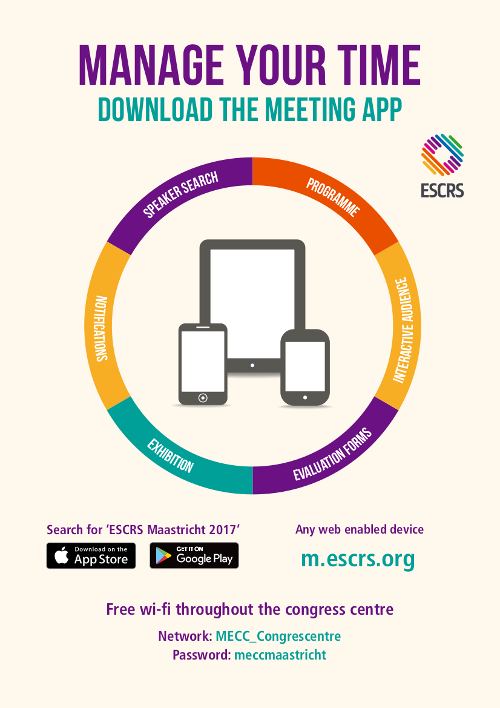Incidence and management of post LASIK ectasia
(results will display both Free Papers & Poster)
Session Details
Session Title: Refractive
Session Date/Time: Friday 10/02/2017 | 10:30-12:30
Paper Time: 11:42
Venue: Brussels Room 0.4
First Author: M. Bohac CROATIA
Co Author(s): M. Koncarevic M. Anticic A. Dukic N.
Abstract Details
Purpose:
To report the rate and management of postoperative ectasia after laser-assisted in situ keratomileusis (LASIK) in a population of patients with no identified preoperative risk factors.
Setting:
Specialty Eye Hospital トSvjetlostモ, Zagreb, School of Medicine University of Rijeka, Croatia
Methods:
A retrospective case review of 30100 eyes which underwent LASIK surgery with either mechanical microkeratome or femtosecond laser between August 2007 and August 2015. Follow up was at least one year. All identified cases of ectasia were treated with crosslinking (CXL) alone, or in combination with either corneal wavefront PRK or Implantable Collamer Lens implantation(ICL).
Results:
Eight eyes of six patients with post-LASIK ectasia were identified.All eyes passed preoperative screening and received bilateral LASIK.In three eyes(three patients) irregular anterior surface was revealed on both eyes and only one eye developed ectasia,1 eye received treatment of high myopia, two eyes(1 patient) had cornea of 490ᄉm, while in 2 eyes(one patient) had no identifiable preoperative risk factors. After ectasia was recognized treatment was performed in order to stop progression and restore visual acuity. Three eyes received only CXL,1 eye underwent ICL implantation 1 year after CXL, while 4 eyes received combined corneal wavefront PRK and CXL.
Conclusions:
The rate of post LASIK keratectasia in our centre is 0,027%. Retrospective identification of irregular corneal tomography requires us to be even more conservative in screening of patients. With modern techniques of keratoconus treatment progression of the disease and visual acuity restoration are possible.
Financial Disclosure:
None



